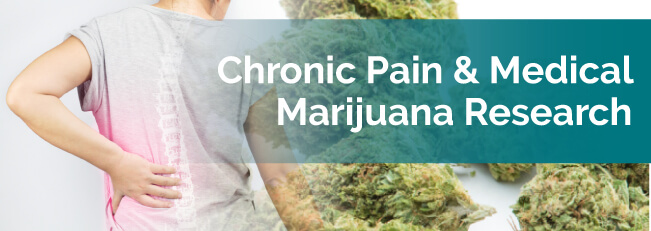
About 100 million Americans deal with chronic and acute pain. We consider pain chronic when it lasts beyond a disease or injury, or when it occurs as part of a chronic condition. Chronic pain can cause sleep issues, mood problems and fatigue.
Medical marijuana could serve as the pain solution doctors seek, according to clinical studies.
Both scientific and anecdotal evidence suggest that we can use marijuana as an alternative to opioid painkillers. Since so many people become addicted to opioids after using them, cannabis relieves pain more safely. For folks dealing with nervous system conditions that cause pain, marijuana especially works well to reduce their pain levels.
Wilsey and a team of researchers wanted to evaluate the painkilling properties of vaping marijuana. They mainly examined how it affected neuropathic pain, which doctors currently have difficulty treating. To ensure the benefits outweighed the side effects, they also checked for any psychoactive effects or reduced cognitive function.
To determine weed’s ability to help neuropathic pain, Wilsey and his colleagues recruited 39 patients to observe. The subjects attended three six-hour sessions where they smoked a low dose, medium dose or placebo, using a different type each session. They received assessments on their neuropathic pain levels and neurological state hourly during the six hours.
The cannabis doses reduced the patients’ pain as efficiently as two popular neuropathic pain treatments. Both dosages worked equally well, so the patients could take a lower dose to experience relief. They felt few and mild neurological side effects.
Three years after the previous study, Wilsey led another team that considered a similar topic — vaping weed for neuropathic pain. However, instead of using subjects with any kind of neuropathic pain, they wanted to examine patients with neuropathic pain related to the spinal cord. They also measured how many side effects the patients felt.
A total of 42 subjects participated in three eight-hour sessions separated by at least three days. They vaporized a low dose, medium dose or placebo, receiving hourly assessments on pain, spasticity, cognitive function and motor function. After the first dose, they took another one three hours later.
Wilsey and his team found again that cannabis worked just as well as the two primary anticonvulsants used for neuropathic pain — it also provided similar pain relief between the two doses. The subjects felt somewhat “high” when they took the cannabis, but patients can avoid that by taking a lower dose.
Malik and his colleagues wanted to measure the ability of dronabinol, a synthetic cannabinoid, to reduce chest pain caused by issues in the esophagus or stomach. Since the esophagus has cannabinoid receptors, they thought cannabis had the potential to relieve pain there. They also considered marijuana’s effects on depression/anxiety and general health.
Out of 13 total participants with chest pain, seven received a dose of dronabinol, and six took a placebo. They took their doses twice a day for a 28-day period. The team assessed the subjects’ pain, mood and general health at the beginning and end of the four weeks.
Dronabinol substantially increased the participants’ pain thresholds and decreased intensity and frequency. The patients didn’t feel any extra depression or anxiety symptoms, and they experienced no significant physical side effects. Malik and his team believe these results lay the foundation for further study.
Need to increase your knowledge about marijuana and chronic pain? We cover every aspect of using medical weed for pain on our condition page. Remember, it’s best to see a doctor who knows about medical marijuana so they can help you create a personalized marijuana treatment plan for your pain symptoms.